What Android USB Connections Mean: MTP, PTP, and USB Mass Storage – Older Android devices support USB sticks for transferring files using a computer. Modern Android devices use either MTP or PTP protocols – you can choose which one you
prefer.
To select a USB connection protocol, open the Settings app, click Storage, click the menu button, and click Connect to Computer via USB. You will also see the protocol in the notification that your device is using when it is connected to your computer via USB.
Why Modern Android Devices Don’t Support USB Mass Storage
The USB mass storage device – also known as the “USB mass storage class”, USB MSC, or UMS, was the way earlier versions of Android displayed their storage on a computer. When you connected your Android device to your computer, you had to specifically click the “Connect storage to PC” button to make the Android device storage available to the computer via a USB drive. When disconnecting it from the computer, you had to click the “Disconnect USB-storage” button.
USB storage is a standard protocol used by flash drives, external hard drives, SD cards, and other USB storage devices. The disk is fully accessible to the computer as if it were internal.
There were problems with such work. Whichever device is accessing storage needs exclusive access. When you connected the storage to your computer, it was disconnected from the Android operating system running on the device. Any files or applications stored on the SD card or USB drive were not available when connected to a computer.
The system files had to be stored somewhere, so the Android device has separate / data partitions for “system storage” and / sdcard for “USB storage” on the same internal storage device. Android installed apps and system files under / data, and user data was saved under / sdcard.
Because of this hard separation, you might end up with too little space for applications and too much space for data. It was impossible to resize these partitions without rooting your device – the manufacturer chose the appropriate number for each partition at the factory.
Since the file system had to be accessible from a Windows device, it had to be formatted with the FAT file system. Not only do Microsoft have patents for FAT, FAT is also an older, slower file system with no modern permission system. Android can now use the modern ext4 file system for all of its partitions because they don’t have to be readable directly by Windows.
Connecting your Android phone or tablet to your computer as a standard USB storage device is convenient, but there are too many drawbacks. Therefore, modern Android devices use different USB connection protocols.
MTP – media device
MTP stands for “Media Transfer Protocol”. When Android uses this protocol, it appears to the computer as a “multimedia device”. The Media Transfer Protocol has been widely advertised as a standardized protocol for transferring audio files to digital music players using Windows Media Player and similar applications. It was designed to allow other media player companies to compete with Apple’s iPod and iTunes.
This protocol works very differently from a USB stick. MTP does not work at the file level, but at the file system of your Android device. Your Android device does not share your entire Windows storage device. Instead, when you connect a device to a computer, the computer asks for the device, and the device responds with a list of files and directories it offers. The computer can download the file – it will request the file from the device, and the device will send the file over the connection. If the computer wants to download a file, it sends the file to the device, and the device decides to save it. When you delete a file, your computer sends a “please delete this file” signal to the device, and the device can delete it.
Android can select the files it gives you and hide system files so you can’t see or change them. If you try to delete or edit a file that cannot be changed, the device will reject the request and you will see an error message.
Your computer does not need exclusive access to the storage device, so there is no need to connect storage, disconnect it, or have separate partitions for different types of data. Android can also use ext4 or any other filesystem it sees fit – Windows doesn’t have to understand the filesystem, only Android.
In practice, MTP is very similar to a USB stick. For example, an MTP device appears in Windows Explorer so you can view and transfer files. Linux also supports MTP devices via libmtp, which is usually included with popular Linux distributions. The MTP devices should also appear in your Linux PC’s file manager.
Apple Mac OS X is a standalone solution – it doesn’t include MTP support at all. Apple iPods, iPhones and iPads use their own proprietary sync protocol along with iTunes, so why would they want to support a competing protocol?
Google provides an Android File Transfer app for Mac OS X. This app is a simple MTP client, so it will work for transferring files back and forth to Mac. Google does not provide this app for other operating systems as they include MTP support.
PTP – digital camera
PTP stands for Picture Transfer Protocol. When Android uses this protocol, it appears to the computer as a digital camera.
MTP is actually based on PTP, but adds more features or “extensions”. PTP works in a similar way to MTP and is commonly used by digital cameras. Any program that supports capturing photos from a digital camera will support capturing photos from an Android phone when PTP mode is selected. PTP was designed to be the standard protocol for communication with digital cameras.
In this mode, your Android device will run digital camera apps that support PTP but not MTP. Apple Mac OS X supports PTP, so you can use PTP mode to transfer photos from Android device to Mac via USB connection without any special software.
If you have an old Android device, you are forced to use a USB stick. On a modern Android device, you have the choice between MTP and PTP – you should use MTP unless you have software that only supports PTP.
If your device has a removable SD card, you can remove the SD card and insert it into the SD card slot of your computer. The SD card will be available to your computer as a storage device, so you can access all the files on it, run the file recovery software, and do whatever else you cannot do with MTP.
Description of Android USB connections: MTP, PTP and USB stick
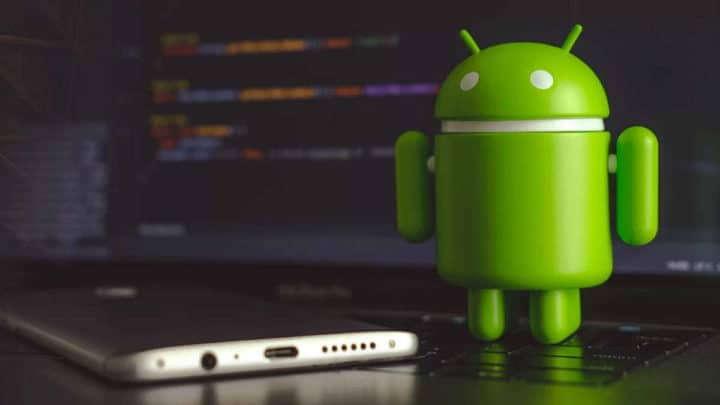
Device configuration (Android): what is it?
This term usually refers to a collection of software and hardware designed for a specific device. The configuration affects both the performance of our phone and its functioning.
What is device software configuration
Software configuration means certain program parameters that are set by the owner of the device.
There are various approaches to storing these settings. Sometimes they are contained in text files that you can edit yourself. A separate interface is often created as well.
Often, the configuration is set even at the stage of software assembly. In order to subject it to any changes, the program must be rebuilt. Often, a special database is used to store the configuration (like GConfig in Windows).
A modern mobile device is actually a portable computer. It has its own operating system, which controls the operation of the software. The most popular are Windows Phone, Android and iOS.
Why Modern Android Devices Don’t Support USB Mass Storage
The USB mass storage device – also known as the “USB mass storage class”, USB MSC, or UMS, was the way earlier versions of Android displayed their storage on a computer. When you connected your Android device to your computer, you had to specifically click the “Connect storage to PC” button to make the Android device storage available to the computer via a USB drive. When disconnecting it from the computer, you had to click the “Disconnect USB-storage” button.
USB storage is a standard protocol used by flash drives, external hard drives, SD cards, and other USB storage devices. The disk is fully accessible to the computer as if it were internal.
There were problems with such work. Whichever device is accessing storage needs exclusive access. When you connected the storage to your computer, it was disconnected from the Android operating system running on the device. Any files or applications stored on the SD card or USB drive were not available when connected to a computer.
The system files had to be stored somewhere, so the Android device has separate / data partitions for “system storage” and / sdcard for “USB storage” on the same internal storage device. Android installed apps and system files under / data, and user data was saved under / sdcard.
Because of this hard separation, you might end up with too little space for applications and too much space for data. It was impossible to resize these partitions without rooting your device – the manufacturer chose the appropriate number for each partition at the factory.
Since the file system had to be accessible from a Windows device, it had to be formatted with the FAT file system. Not only do Microsoft have patents for FAT, FAT is also an older, slower file system with no modern permission system. Android can now use the modern ext4 file system for all of its partitions because they don’t have to be readable directly by Windows.
Connecting your Android phone or tablet to your computer as a standard USB storage device is convenient, but there are too many drawbacks. Therefore, modern Android devices use different USB connection protocols.
What is MTP, UMS and PTP Computer Connection?
There are only 3 types of connecting devices via USB to a computer:
- MTP
- UMS или USB MSC
- PTP
What is MTP?
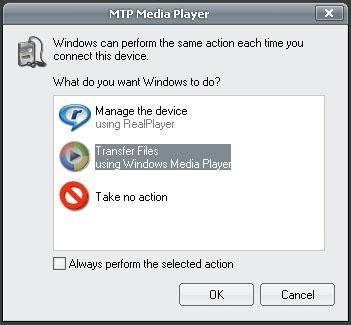
MTP is a set of custom extensions for PTP ( Picture Transfer Protocol ) that aims to transfer files and associated metadata over USB . Still here? Let’s continue then.
Originally part of the Windows Media framework , in 2008 MTP was standardized as a type of USB device, thus becoming an established standard. If you’ve owned an iriver or Creative MP3 player, you’ve probably come across MTP . If you use a digital camera, which, when connected to a PC, is automatically recognized as a device, then RTR is involved in the work , which, in fact, is the same as MTP . The thing is old enough, but not for Android .
Why use MTP instead of USB Mass Storage?
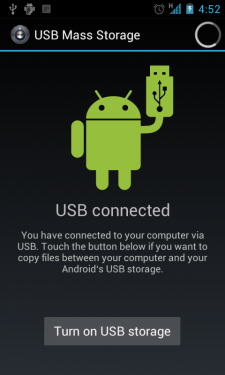
The essence of using MTP is that now manufacturers of mobile devices do not need to create two separate sections, one for applications, the other for media files. Previously, a sin was noticed behind them, which consisted in expanding the second section at the expense of the first, and this very often led to a lack of space for new applications. With MTP, both types of files can be stored together.
In USB Mass Storage has one big disadvantage – when you create a section of memory that one of them turns out to be completely at the mercy of another device. This means that your tablet or smartphone will not have access to this section, but the computer to which the device is connected can use it in every possible way. For this reason, some applications and especially widgets placed on the SD card do not work.
Another advantage of MTP is that there is no need to use the FAT file system for storage. This ultimately leads to faster device performance.
MTP Device Driver as an Alternative to USB Mass Storage
As for the functioning of such a system, it is probably clear that it is, in principle, impossible without installing a driver. However, the driver works a little differently compared to the usual data exchange via USB MTP Device.
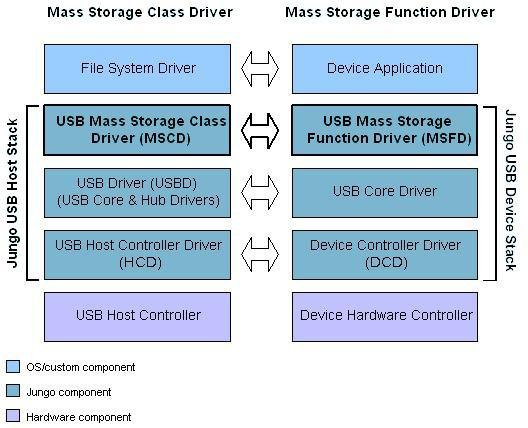
The most important difference, which is also the advantage of the new technology, is as follows. The fact is that when using a standard connection via USB Mass Storage, two sections are created (for media files and for applications separately), and one of them always depends on the other. A situation arises when a smartphone or tablet does not have access to one of the sections, but the computer perceives both. That is why a situation arises when applications installed on the SD card not only do not work, but do not even start.
In the case of using MTP Device, there are no such restrictions. In addition, there is even no need to use the FAT file system. And if earlier the redistribution of free space occurred due to the influence of one partition on another, in this case there is nothing like this. Simply put, previously, dragging the free space of one partition led to a decrease in the size of another. Both sections now remain unchanged.
Installation of MTP
Since the days of Windows XP, MTP devices have been working without problems with Windows . Connect your Galaxy Nexus , choose MTP as the connection type, the computer operating system finds the necessary drivers by itself, you just need to wait a little. Moving files between smartphone and PC without any problems is ensured. But what should those users who prefer Linux and Mac do?
Standard driver installation in Windows
Now let’s see how the standard driver installation is performed when synchronizing the device with Windows. Let’s say we have a Samsung smartphone or tablet.
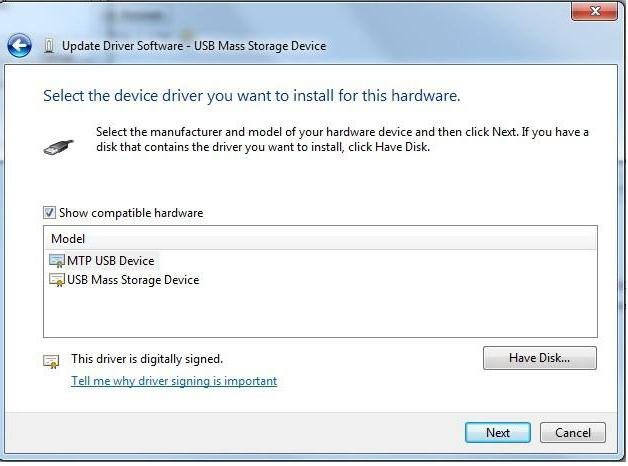
As a rule, usually the first time a device is connected to a computer terminal, the system displays a message in the system tray that a new device has been found (in our case, MTP Device Samsung). The system itself installs the driver necessary for synchronization without any problems, after which the data transfer can be carried out in the same way as using a regular USB connection, when both the internal storage and the external SD card are detected. Errors may, of course, appear (like “Samsung Mobile MTP Device driver is not installed”), but we will dwell on them a little later.
General guidelines for installing drivers for most Android devices
In principle, the automatic installation of the necessary drivers by the Windows operating system itself almost always works. However, you can use alternative methods related to the installation of related utilities for a smartphone or tablet.
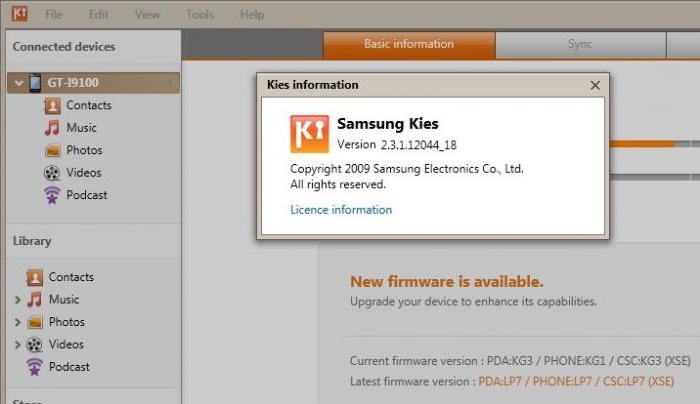
So, for example, the same Samsung MTP Device driver is installed automatically if the latest version of the Kies application is available. Note that Samsung does not release drivers for each specific model of a mobile gadget, so there is absolutely no point in looking for them, say, for the S6 or for the Galaxy Note 2.
For HTC smartphones, you need to use specialized software called HTC Sync Manager (sometimes you may need to install the firmware via FastBoot mode). For LG, you can find a driver on the manufacturer’s official website specifically for a specific model. For Nexus, you need to use the ADB RUN utility and install the driver from the standard “Device Manager”. In the case of using Sony gadgets, there are two options: installing Sony PC Suite or using FlashTool drivers. In principle, there is no difference, but you need to remember that these are two mutually exclusive programs – when installing one, the other must first be removed.
Mac OS

The guys with Android made this process as painless as possible. You just need to download and install the Android File Transfer program , connect the device to your computer, launch the application and get started. You can drag and drop any files both from the device and to the device, but the size of each individual file must not exceed 4 GB.
Linux

Some difficulties begin with Linux . You will not achieve the desired goal in one click, but you will be able to study in detail all the processes that occur during this process. Don’t despair, you just have to have some fun with the command window. Here’s how to use the Galaxy Nexus with Ubuntu :
Install UDEV rule by opening the rules file via terminal
sudo nano -w /etc/udev/rules.d/51-android.rules
Then enter the following line at the bottom of the file (be sure to include your username):
SUBSYSTEM==”usb”, ATTR{idVendor}==”04e8″, ATTR{idProduct}==”6860″, MODE=”0600″, OWNER=”<your-username>”
Then the turn will come for:
- sudo apt-get install mtpfs
- sudo mkdir /media/GNexus
- sudo chmod 775 /media/GNexus
Then you should connect the Galaxy Nexus to the PC and in the same window as before, enter:
sudo mtpfs -o allow_other /media/GNexus
This will allow you to drag and drop files using Nautilus , and don’t forget to enter the following command when finished:
sudo umount mtpfs
UMS
Universal Mass Storage (universal drive) or abbreviated UMS, also known as USB SMC.
UMS stands for Universal Mass Storage. A data transfer protocol commonly found on USB flash drives and external hard drives.
PTP – digital camera
PTP stands for Picture Transfer Protocol. When Android uses this protocol, it appears to the computer as a digital camera.
MTP is actually based on PTP, but adds more features or “extensions”. PTP works in a similar way to MTP and is commonly used by digital cameras. Any program that supports capturing photos from a digital camera will support capturing photos from an Android phone when PTP mode is selected. PTP was designed to be the standard protocol for communication with digital cameras.
In this mode, your Android device will run digital camera apps that support PTP but not MTP. Apple Mac OS X supports PTP, so you can use PTP mode to transfer photos from Android device to Mac via USB connection without any special software.
If you have an old Android device, you are forced to use a USB stick. On a modern Android device, you have the choice between MTP and PTP – you should use MTP unless you have software that only supports PTP.
If your device has a removable SD card, you can remove the SD card and insert it into the SD card slot of your computer. The SD card will be available to your computer as a storage device, so you can access all the files on it, run the file recovery software, and do whatever else you cannot do with MTP.
Differences between MTP and UMS (USB MSC)
The main difference between MTP and UMS (USB MSC) protocols is that a different type of connection is used. MTP devices are connected to the computer as multimedia devices, and UMS (USB MSC) devices as removable disks or storage devices. PTP connection, as it was said, is used only for transferring and printing photos.
Older Android devices support USB mass storage for transferring files to and from your computer. Modern Android devices use the MTP and PTP protocols – you can choose either of the two.
To select a USB connection protocol, open the Settings app, tap Storage, then the menu button, and select USB connection to a computer. When the device is connected to a computer via USB, the protocol it uses is shown in the notification.
USB mass storage – also known as the “USB mass storage class” – is a method by which older versions of Android made their memory available to a computer. When connecting an Android device to a computer, I had to press the “Connect memory to computer” button to make the device memory
Android has become available to the computer via USB mass storage. When disconnecting from the computer, you had to click the “Disconnect USB memory” button.
USB mass storage is a standard protocol used by flash drives, external hard drives, SD memory cards, and other USB storage devices. The drive becomes fully accessible to the computer, just like an internal drive.
This scheme of work had drawbacks. A device connecting to memory required exclusive access to it. The memory was disconnected from the Android operating system when connected to a computer. Files and applications stored on a memory card or USB storage device became unavailable when connected to a computer.
System files need to be stored somewhere; they cannot be detached from the device, so Android devices contain a separate / data section for “system memory” and a / sdcard section for “USB memory” on the same internal storage. Android installs apps and system files under / data, while user data is stored under / sdcard.
Hard partitioning resulted in not enough space for applications and too much space for data. It is impossible to resize partitions without obtaining superuser rights on the device – the manufacturer chooses the size for each partition at the factory.
Since the file system had to be accessed from a Windows computer, it was formatted as FAT. Microsoft holds patents on FAT, which is an older and slower file system without a modern permission system. Android currently uses the new ext4 file system for all partitions because Windows doesn’t have to read them directly.
Connecting an Android phone or tablet to a computer as a generic USB storage device is convenient, but it has too many disadvantages, so newer Android devices use different USB connection protocols.
MTP stands for Data Transfer Protocol. Android when using this protocol appears to the computer as a “storage device”. The data transfer protocol has been promoted as a standardized protocol for transferring audio files to digital music players using Windows Media Player and similar programs. It was supposed to allow other media companies to compete with the Apple iPod and iTunes.
This protocol is very different from USB mass storage. Instead of exposing the file system of an Android device to Windows, MTP works at the file level. The Android device does not provide all of its memory to Windows. Instead, the computer sends a request to the connected device, and it responds with a list of files and directories. The computer can download the file by requesting it from the device, which will send the file over the connection. If the computer sends a file to the device, the device saves it. When a file is deleted, the computer signals the device to delete the file, which the device does.
Android chooses which files to show and hide system files so they cannot be seen or changed. If you try to delete or edit an unmodifiable file, the device rejects the request and displays an error message.
The computer does not need exclusive access to the drive, so there is no need to connect memory, disconnect it, or create separate partitions for different types of data. Android can use ext4 or any other file system. Windows is not required to understand the Android file system.
In fact, MTP works very similarly to USB mass storage. For example, an MTP device is shown in Explorer so that files can be viewed and transferred. Linux also supports MTP through libmtp, which is bundled with popular Linux distributions. MTP devices are also displayed in the Linux file manager.
Apple Mac OS X does not support MTP at all. iPods, iPads, and iPhones all use their own proprietary sync protocol with iTunes, so why should they support a competing protocol?
Google provides an Android file transfer application for Mac OS X. It is an MTP client and transfers files to Mac. Google does not ship this app for other operating systems because they have MTP support.
PTP – digital camera
PTP stands for Picture Transfer Protocol. With this protocol, Android appears to the computer as a digital camera.
MTP is based on PTP but adds additional capabilities. PTP functions like MTP and is used by digital cameras. Any program that captures photos from digital cameras is capable of extracting them from an Android phone if the PTP mode is selected. PTP serves as a standard protocol for communicating with digital cameras.
In this mode, the Android device will run digital camera apps that support PTP but not MTP. Mac OS X supports PTP, so you can use it to transfer photos from your Android device to your Mac via USB without any special software.
In the case of an old Android device, you will have to use USB mass storage. New devices allow you to choose between MTP and PTP -PTP is needed for programs that only support it.
If your device has a removable memory card, you can remove it and insert it directly into your computer’s memory card slot. The memory card will appear to the computer under the guise of a drive, which means that it will be possible to access all the files on it, run the file recovery software and do everything else that MTP does not allow.
In this article, we will figure out how to connect Android to a computer / laptop via USB as a USB flash drive and be able to transfer information without using a classic flash drive.
This article is suitable for all brands that produce phones on Android 9/8/7/6: Samsung, HTC, Lenovo, LG, Sony, ZTE, Huawei, Meizu, Fly, Alcatel, Xiaomi, Nokia and others. We are not responsible for your actions.
Prior to Android 4.4 KitKat, it was possible to establish a USB connection as a USB flash drive. The PC saw the device as a removable disk and provided the same rights: the user could, and perform other actions.
Then, in new versions of Android, the USB mode was replaced by MTP, in which only the data transfer function remained, and the same formatting does not work.
Setting up a USB connection
To manage your computer connection via USB, you need. To do this, add the “For Developers” section to the Android settings (if it is not there):
- Open the settings.
- Go to the section “About phone” or “About device”.
- Build number or MIUI version.
- Press (click) on this item until you see a message that you have become a developer (usually 7-10 clicks are enough).
After the section for developers appears in the settings, you can enable USB debugging. The item is called that, so you just need to move the slider to the “Enabled” position and confirm the permission.
Now you can connect the device to a computer via USB and select the operating mode. In the latest versions of Android, the most used are:
- MTP – transfer any files from computer to phone and vice versa.
- PTP – transfer of photos, as well as transfer of files not supported in MTP mode.
- Charging only.
Connecting in USB mass storage mode
If you can’t get used to working with your media player, go back to using USB mass storage mode. For this you will need:
- Installed program USB MASS STORAGE Enabler.
Using this method can damage system files. In this case, you will have to reflash Android.
To have Android connect to your computer as a storage device:
- Запустите USB MASS STORAGE Enabler.
- Grant superuser rights and agree to change how Selinux works.
- If the device is supported, the main menu of the application will open.
- Click Enable USB MASS STORAGE.
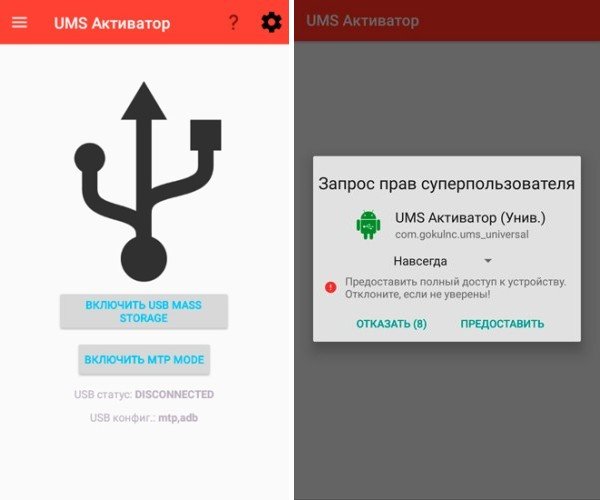
Now, when connected to a PC, the phone or tablet will appear as a storage device. To connect in MTP or PTP mode, just restart the device. Once you have finished using mass storage mode, re-enter the app and unplug USB MASS STORAGE.
The Media Transfer Protocol is an official driver released by Microsoft that allows you to control the content of portable devices connected to your computer. For the most part, this software is used to be able to transfer data between a Windows computer and an Android smartphone / tablet. In fact, modern operating systems are able to “independently” pull up such software from the network, so this driver will be useful, rather, to users of older versions of Windows.
Usage
Install Media Transfer Protocol if you run into problems while trying to transfer data to or from your portable device. Also, this driver is required for some Android device managers to work. In fact, in the case of managers, the Media Transfer Protocol is often installed bundled with the program itself, so a separate driver download is also not required. Well, the third “case” of using the Media Transfer Protocol is working with various “flashers” (programs designed to install new “firmware” on devices from a ROM file). Here they, more often than not, do not install the “companion” driver on their own. So here the user has to download and install the MPT driver “manually”.
Additional purpose
In general, initially, Media Transfer Protocol was part of the Windows Media Device Manager 10 SDK. So it started spreading as a separate component not so long ago. Why was this component part of the Software Development Kit? In order for developers to be able to test and debug applications created for mobile platforms.
Possible errors and methods of their elimination
Unfortunately, errors cannot be ruled out either. In most cases, this only applies to Windows operating systems. Let’s try to consider the most common failures and the simplest methods of eliminating them.
First of all, it is worth checking if the accompanying utilities are up to date. When using them, it is advisable to download the latest distribution from the manufacturer’s website.
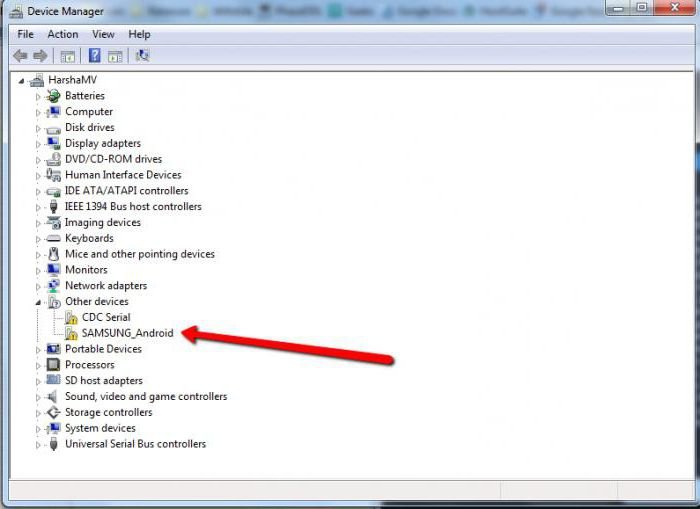
If the driver for the MTP Device still does not work, you can try reinstalling it manually. To do this, go to the “Device Manager”. In theory, if the driver is not installed or the device itself is not working properly, it will be marked with a yellow icon. Everything is simple here. You need to find the driver update button in the properties, and then select only compatible devices from the list. If this does not help, you will have to remove it, and then reinstall it in automatic mode. If this does not work, you will have to tell the system the place where the installation distribution containing the necessary information is stored.
Sometimes, however, it doesn’t help either. There can be any number of reasons. In some cases, installing the most recent version of Windows Media Player on your system can help. You will probably just have to check the system partition of the hard disk for errors, but you never know what could be. It also happens that this type of errors or failures can be issued by the “native” media player itself (unfortunately, this option is not excluded). In this situation, if you are using versions of Windows in the form of “seven” and higher, you can try to simply disable the multimedia components in the Programs section of the Control Panel.
As it is already clear, the reasons for such failures simply cannot be counted. Therefore, you will have to move from the simplest methods of solving the problem to more complex or even cardinal ones, taking into account the specifics of the cause in each specific case and for each specific device.
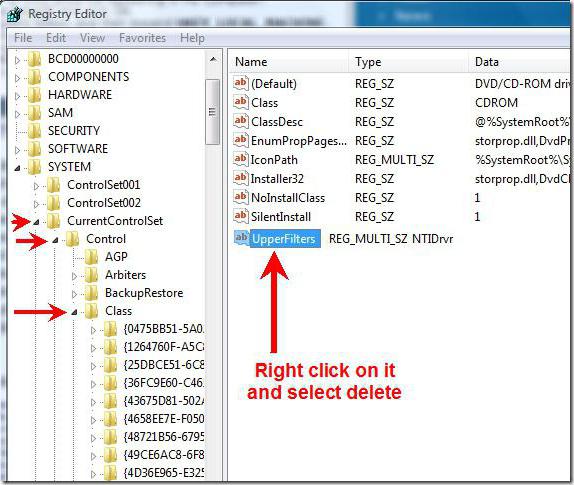
However, as practice shows, one of the universal solutions can be the use of the system registry. Here you need to find the UpperFilters key in the main section HKEY_LOCAL_MACHINE through sequential movement through the tree (SystemCurrentControlSetControlClass) and delete it. This will not affect the performance of the operating system, but the connection will work as expected. Immediately, we note that in most cases this method can be used for gadgets from Samsung.
Alternative
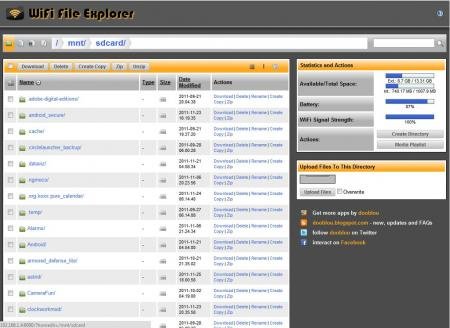
Alternatively, you can use a combination of Wifi File Explorer and QuickSSHd and send files wirelessly .
Conclusion
That, in principle, is, in short, everything related to the main issues related to the use of a connection using MTP technology. As you can see, you don’t have to strain too hard to install the driver, except in Linux. Major errors can be easily eliminated, but for each case it is advisable to find out the root cause before taking any drastic action, such as deleting registry keys. But in most cases, there should be no failures, especially if you install the latest versions of additional software for your gadget.
In any case, you can simply refer to the official Internet resources of manufacturers of mobile equipment. Surely there is a help section describing these types of problems. Perhaps the problem is not even in Windows, but, for example, in the device’s firmware or disabled functions and settings.
Sources of
- https://mob-mobile.ru/statya/4315-chto-takoe-konfiguraciya-v-telefone.html
- https://android-example.ru/useful-articles/chto-oznachayut-usb-podklyucheniya-android-mtp-ptp-i-usb-mass-storage/
- https://androidp1.ru/chto-takoe-mtp-ums-i-ptp-chem-otlichayutsya/
- http://droidtune.com/4179/chto-kroetsya-za-abbreviaturoj-mtp-i-kak-pravilno-etim-rasporyaditsya.html
- https://FB.ru/article/216185/chto-takoe-mtp-device—opisanie-i-ustanovka
- https://newtravelers.ru/tp-link/chto-takoe-mtr-device-chto-takoe-mtp-ums-i-ptp-chem-otlichayutsya-peredacha.html















